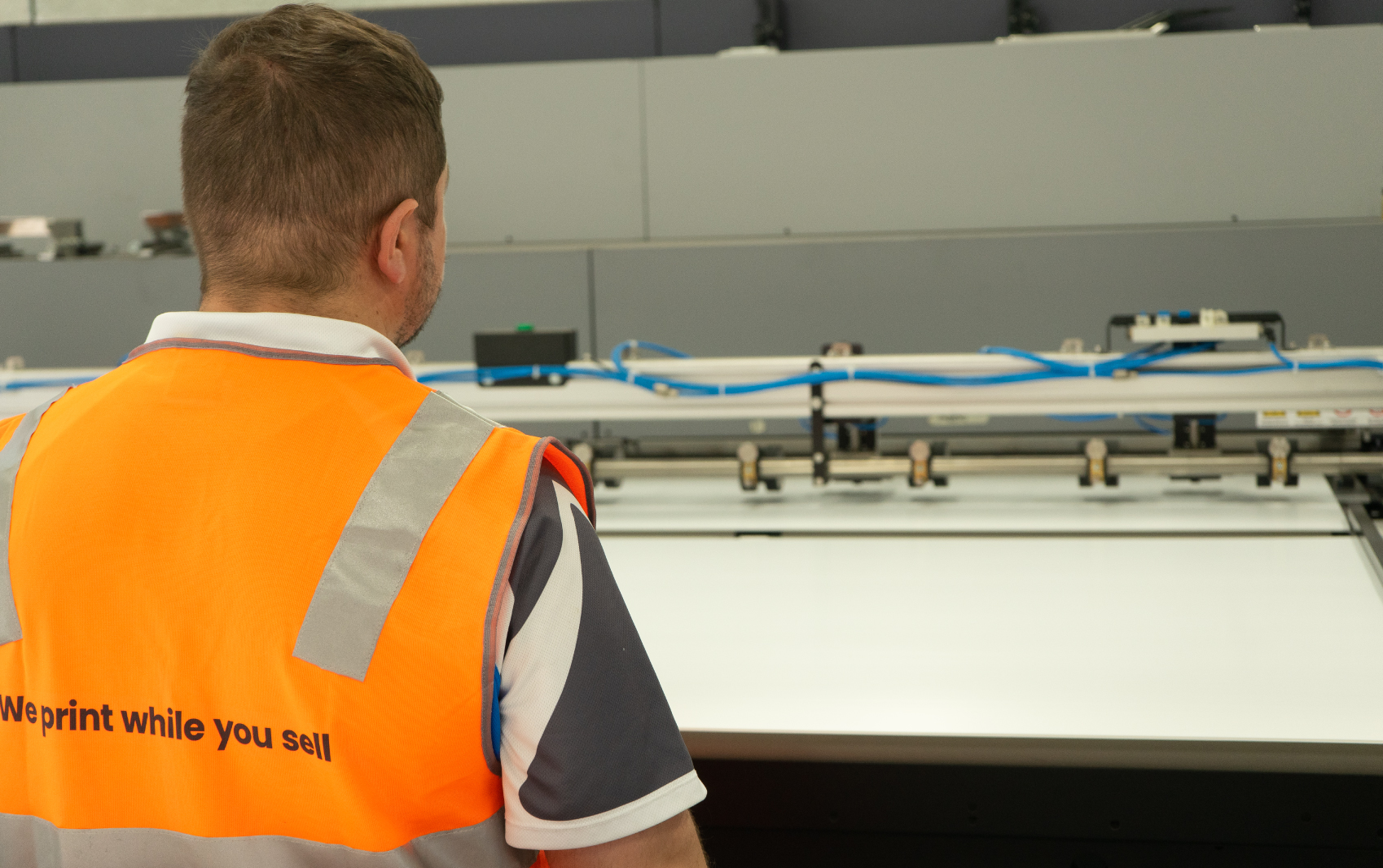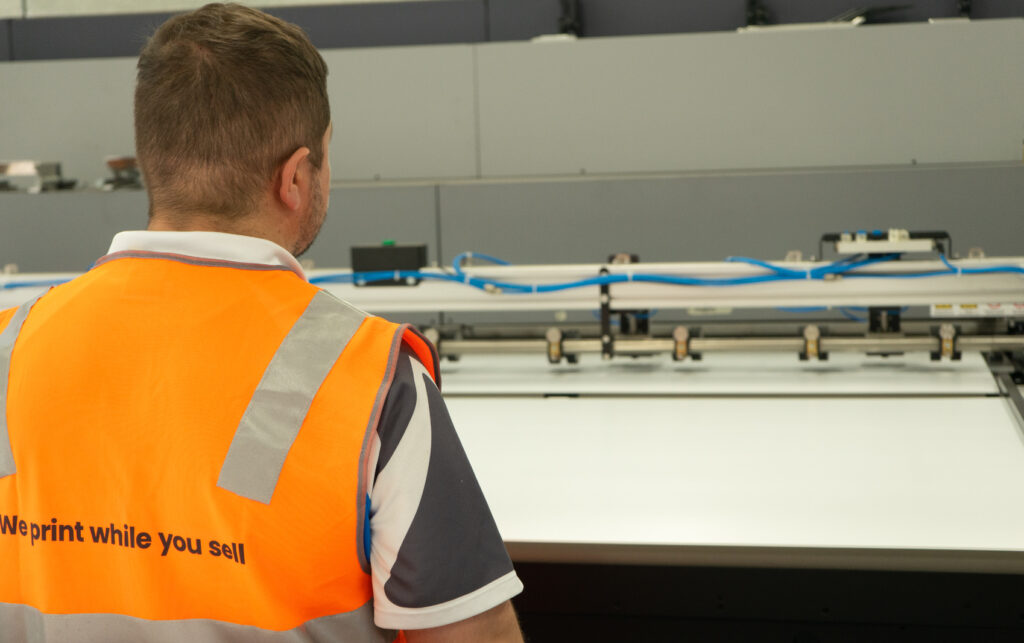4 Tips for Optimal Large Format Printing

Jamie shares several tips to minimise delays and achieve optimal output from your large format printing.
1) Always Use Vectors Where Possible
When creating / supplying artwork, utilise vectors – these are your best friend! Vectors are images created from shapes based on mathematical formulas. This keeps them sharp no matter how large the artwork needs to be. Don’t worry – you don’t need to know the tech or mathematics behind it all. Your graphic design software should look after that. The reason we (and other printers) recommend vectors is that they are sharper than Rasters. With rasters, there is always a point where the images will pixelate. Rasters are essentially a photo – hence the inability to scale infinitely. In large format printing this is invaluable as it eliminates the possibility of any issues.
Even better, vector images contain the CMYK values of a graphic which leads to more accurate colour output in the finished print.
2) Ensure Fonts Are Converted to Outlines
Fonts are perhaps the most fickle element when it comes to supplied artwork – just ahead of colours. Due to the variety of fonts in existence and the legal / technical limitations of having them stored within a database, you should always convert your text elements to outlines. Without conversion there’s a high chance your printer may not have the font available and it will be automatically substituted by their graphic design software. This is particularly true of bespoke fonts or those in languages that do not use the English alphabet.
There are other processes to workaround these issues – like flattening of an image file – however this can create other issues that need fixes of their own. By simply converting fonts to outlines you can ensure that artwork will print as it is provided, and avoid any delays to printing.
Most trade printers will not undertake proofing and require artwork to be provided in this way. This allows for automation and expedited printing with minimal service requirements. If you want to better understand what is required by your trade printer, and find the right match, we recently discussed the fundamental questions to ask.
3) Flatten Gradients Where Possible
When it comes to gradients (unlike Fonts), flattening is a useful process to ensure an accurate finished product. If you leave gradients as a raster, or simply a selected effect option in a PDF, it may be interpreted differently depending on the Raster Image Processing Software (RIPS) used by the printer. Not all RIPS are made the same, so it is best to standardise your images and eliminate the chance of gradients going awry in your wide format printing.
It’s always safer to flatten your gradients and it doesn’t take long – so what have you got to lose?
4) Utilise CMYK For Large Format Printing
Always create and supply your print artwork in CMYK colour format. Conventional large format printing is done using CMYK inks, so you’ll want to ensure your artwork matches. Whilst it may be tempting to use RGB in this digital age, that colour format is only best for screen / web design. Quite often we find people are surprised by the difference in colour between a digital RGB file and a sample CMYK print output.
By using CMYK from the very beginning you’ll be able to see the actual output throughout the entire processes. This leads to accurate printing, a better idea of the finished product to set expectations, and satisfied customers.
BONUS: Inspect Your Artwork At 100% On Screen
Here’s a bonus tip we’ll throw in for free: make sure you view your PDF Files at 100%!
This simple trick can pay dividends down the line and help you avoid any issues with large format printing quality. By viewing at 100% you will get an idea of the actual quality of images and see any potential pixelation.
For those more technically-inclined here’s what this means from a DPI perspective:
- If the file is 10% then make sure to zoom in at 1000% to see the artwork as it will end up.
- 120 DPI for raster photos at 100% size is what we generally recommended. Going over this is likely overkill and will see diminishing returns.
An example: For banner files at 10% size, ensure that it is set up at 1200 DPI so when blown up it gets to the 120 DPI mark.

Eliminating Errors From Wide Format Printing
So there you have it – our top tips for eliminating any issues when utilising a trade printing partner. We’ve worked thousands of print jobs over the years; by following these recommendations our customers have accelerated their print processes and eliminated the burden of rework / delays.
If you’re a high volume print reseller looking for a trade-only printing partner with a wide range of products speak to us today.


